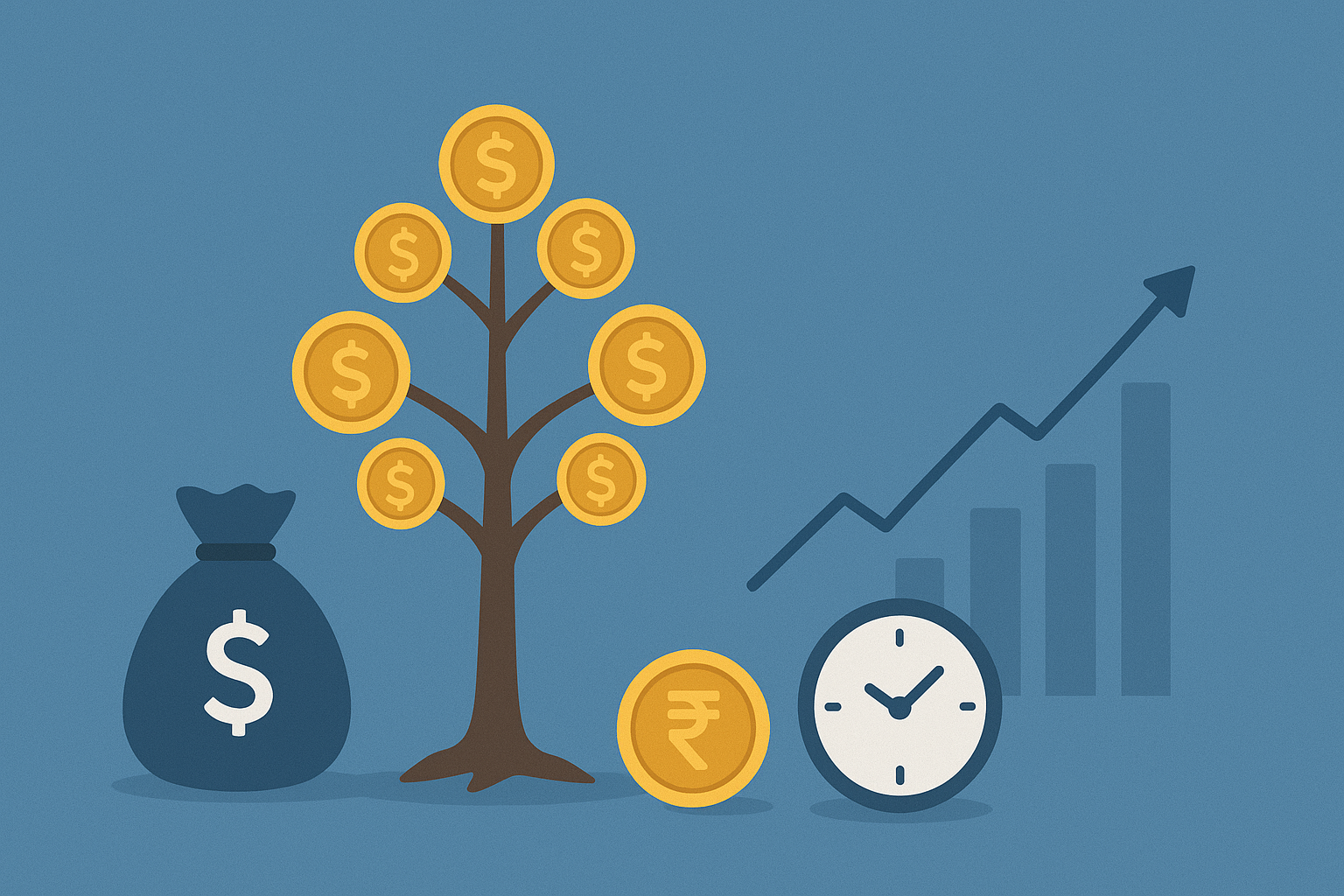The Stock market is a dynamic and essential component of modern economies, providing a platform for companies to access capital and traders to make investments in the growth of businesses. One of the most crucial significant in the corporate life cycle is the Initial Public Offering (IPO). An IPO represents the initial public offering of shares with the aid of an organisation, marking a shift from its reputation as a private organization to that of a public entity. In This Article, Namo Trading Academy provides an in-depth understanding of what an IPO represents, including its significance, process, advantages, risks, and its role within the financial sector. Here we can provide a Road map of Initial Public Offerings (IPOs) and Their Role in the Stock Market.
1. Understanding the Basics of an IPO
2. Why Do Companies Go Public?
3. The IPO Process: Step-by-Step
4. Types of IPOs
5. Key Players in an IPO
6. Advantages of Going Public
7. Disadvantages and Risks
8. IPO Performance and After Market Behaviour
9. How to Invest in an IPO
10. Historical Examples of Notable IPOs
11. Regulatory Landscape and Global Variations
Now we will discuss above topics deeply:
1. Understanding the Basics of an IPO
An Initial Public Offering (IPO) is a process by which a private company offers its stock to the public for the very first time. It’s generally regarded as a main turning point within the development of an organisation. As soon as an enterprise becomes publicly traded, its stock is exchanged on a securities alternate like the New York Stock Exchange (NYSE) or Nasdaq.
IPOs are typically pursued by companies looking to raise capital to fund growth, pay off debt, or invest in new projects. By selling shares to the public, the company profits get entry to an incredible pool of capital. In return, investors had an opportunity to own a piece of the company and potentially benefit from its future growth.
2. Why Do Companies Go Public?
There are several strategic reasons why a company might decide to go public:
a. Capital Raising
The primary reason for going public is to raise capital. IPOs can generate significant funds that companies can use for expansion, research and development, acquisitions, and other strategic initiatives.
b. Liquidity for Shareholders
An IPO provides an opportunity for early investors, founders, and employees to sell their shares and realize gains. It offers liquidity that is not available in a private company.
c. Brand Visibility and Credibility
Being listed on a major stock exchange enhances a company’s visibility and credibility. It can lead to increased customer confidence and attract better business opportunities.
d. Currency for Acquisitions
Publicly traded shares can be used as a form of currency for acquisitions. This is particularly useful for companies looking to grow through mergers and acquisitions.
3. The IPO Process: Step-by-Step
Going public is a complex and highly regulated process. Here are the major steps involved:
a. Selecting Underwriters
The first step is deciding on funding banks (underwriters) to guide the IPO process. These underwriters assist the company in making ready for the IPO, determining the offering price, and selling the shares to investors.
B. Due Diligence and Regulatory Filings
The company and its underwriters conduct due diligence to ensure all material information is disclosed. The company files a registration statement (Form S-1 within the U.S with the Securities and Exchange Commission (SEC).
C. Pricing the IPO
The underwriters and the company determine the price at which stocks or shares can be offered to the public. This entails assessing investor demand, company valuation, and market conditions.
D. Roadshow
Before the IPO, the business enterprise’s executives and underwriters go on a roadshow to promote the offering to potential investors. This helps determine the interest and finalize pricing.
e. Going Public
Once the SEC approves the registration and the offering price is set, the company issues shares to the public. The shares begin trading on the designated stock exchange.
4. Types of IPOs
There are different methods by which companies can go public:
a. Traditional IPO
In a traditional IPO, investment banks buy shares from the company and sell them to the public. This is the most common method.
b. Direct Listing
In a direct listing, the organization sells existing shares without raising new capital. There are no underwriters involved, and pricing is determined by market demand.
c. Special Purpose Acquisition Company (SPAC)
SPACs are shell companies that go public to raise capital and then merge with a private organization, effectively taking it public without a traditional IPO process.
5. Key Players in an IPO
Several stakeholders are involved in the IPO process:
Company Management: Makes strategic decisions and presents the business to investors.
Underwriters: Guide the IPO process and help sell shares.
Regulators (e.g., SEC): Ensure compliance with securities laws.
Investors: Purchase shares during and after the IPO.
Legal and Accounting Advisors: Ensure accurate disclosures and financial reporting.
6. Advantages of Going Public
Access to Capital: Companies can raise large amounts of money.
Enhanced Visibility: Public companies attract more media and analyst coverage.
Liquidity: Shares can be easily traded, providing liquidity to Traders.
Employee Incentives: Public shares can be used for stock-based compensation.
7. Disadvantages and Risks
Regulatory Burden: Public companies face strict regulatory and reporting requirements.
Market Pressure: Share prices are subject to market volatility and investor sentiment.
Loss of Control: Founders may lose some control due to shareholder influence.
Cost: IPOs are expensive, involving fees for underwriters, legal, and accounting services.
8. IPO Performance and After market Behaviour
IPO performance can vary widely. Some IPOs revel in a “pop” in price on the first day of trading, while others also underperform. Long-term performance depends on the company’s basics and market conditions.
Investors shouldn’t forget factors consisting as:
- Valuation metrics
- Industry outlook
- Company growth prospects
- Financial health
9. How to Invest in an IPO
Investing in an IPO can be rewarding but also risky. Here’s how investors can participate:
Through Brokerage Accounts: Some brokerages offer IPO access to retail Traders.
Mutual Funds and ETFs: Indirect exposure through funds that invest in IPOs.
Research: Conducting a thorough analysis is crucial before investing.
10. Historical Examples of Notable IPOs
Amazon (1997): Priced at $18 per share, now one of the world’s most valuable companies.
Google (2004): Raised $1. 67 billion and revolutionized digital advertising.
Facebook (2012): One of the largest tech IPOs, raising $16 billion.
Alibaba (2014): Raised $25 billion, the largest IPO at the time.
11. Regulatory Landscape and Global Variations
IPOs are governed by securities laws and regulations, which vary by country. In the U.S., the SEC plays a crucial role. Other countries have their regulatory bodies, such as:
UK: Financial Conduct Authority (FCA).
India: Securities and Exchange Board of India (SEBI).
China: China Securities Regulatory Commission (CSRC).
Conclusion
An IPO is a transformative event for a company, offering both opportunities and challenges. It provides a pathway to raise capital, increase visibility, and fuel growth. However, it also brings increased analysis, regulatory burdens, and market risks.
For investors, IPOs can present exciting opportunities to invest early in promising companies. However, thorough research and risk assessment are essential. Understanding the details of IPOs empowers consumers and entrepreneurs alike to make informed decisions and navigate the ever-evolving landscape of the stock market with confidence. We hope this Article, Initial Public Offerings (IPOs) and Their Role in the Stock Market, will help your Stock Market journey for a Better Understanding. Join Us, Namo Trading Academy, and transform your skills to the next level.



